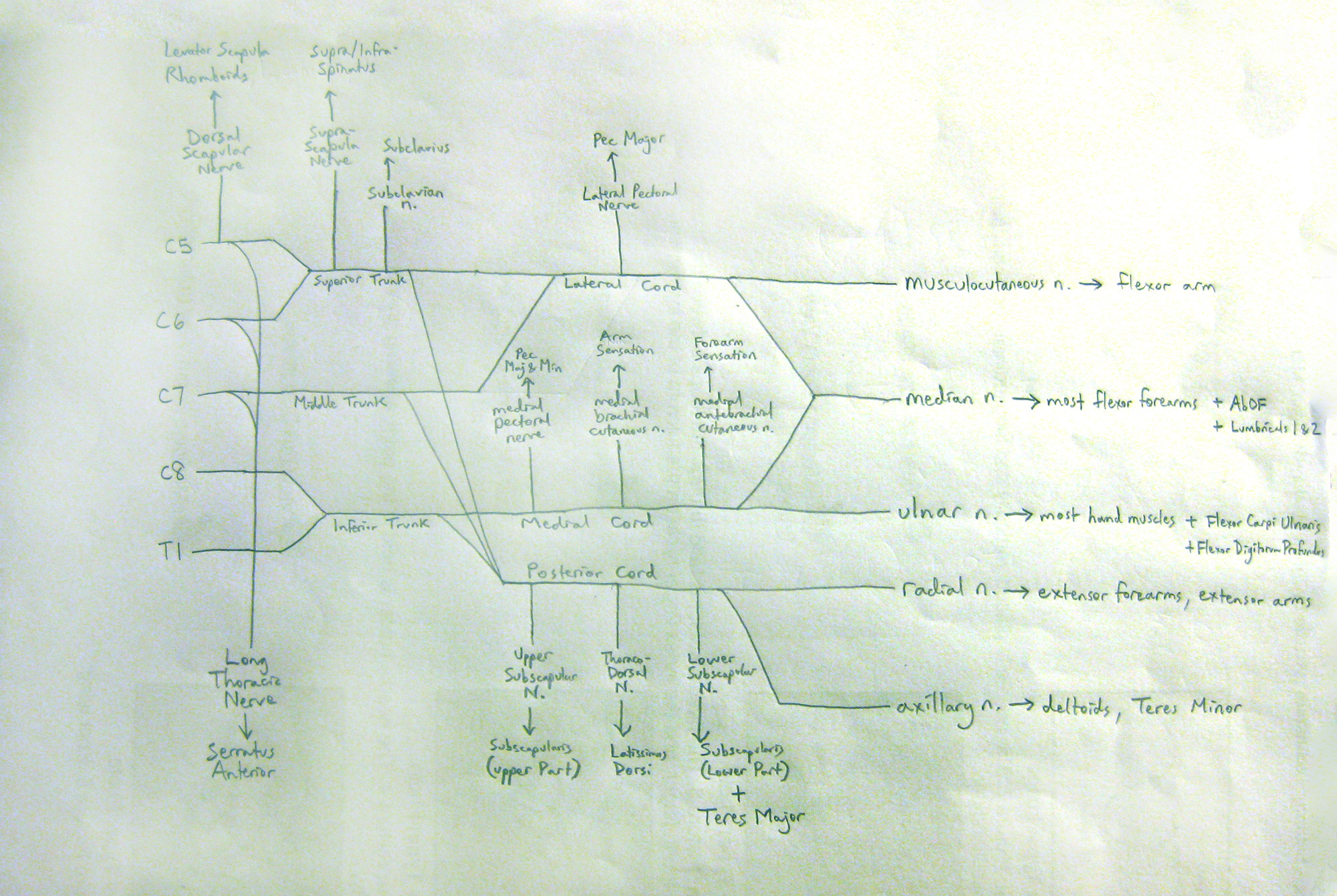Steps
1. When you want to move your muscle, your central nervous system sends an electrical signal down nerves to your muscle. At the neuromuscular junction where the nerve and muscle meet, this electrical signal opens up presynaptic voltage-gated calcium channels, causing calcium (Ca) to flow into the nerve terminal. This Ca attaches to synaptotagmin on the presynaptic ACh-containing vesicles, triggering synaptobrevin on the vesicle to intertwine with the syntaxin and SNAP-25 proteins on the cell membrane of the nerve terminal (forming a SNARE complex), tying the vesicle to the cell membrane, causing them to merge, spilling the ACh out of the vesicle and into the synaptic cleft. The amount of acetylcholine (ACh) that each vesicle releases is called a quantum.
Clinical Correlates
Lambert-Eaton Syndrome is due to autoantibodies against the presynaptic voltage-gated calcium channel, causing muscle weakness that improves with repetitive motion. The weakness improves because repetitive motion causes an increase in Ca in the nerve cell, eventually overcoming the blockade of the voltage-gated calcium channels. In Botulism and Botox, the botulinum toxin cleaves the SNAP-25, preventing the ACh-containing vesicles from merging with the plasma membrane of the nerve terminal, preventing muscle from contracting. Botox paralysis the muscles in your face, alleviating wrinkles.
2. Two ACh bind to each nicotinic acetylcholine receptor (cation-selective), causing it to open, allowing all ions to pass through (although Na predominates). This causes a depolarization known as Excitatory Postsynaptic Potential (EPSP).
Myasthenia Gravis is caused by autoantibodies against these nicotinic ACh receptors, causing muscle weakness that worsens with repetitive motion.
3. Unlike the rest of the post-synaptic muscle cell membrane (aka sarcolemma), the immediate post-synaptic membrane is not excitable (to cause action potential). Thus the EPSPs need to build up large enough to travel to the adjacent sarcoplasm surfaces that are excitable. Then with enough depolarization that reaches action potential threshold, the voltage-gated sodium channels in the adjacent surfaces open, then in an all-or-nothing manner, an action potential is triggered.
4. Meanwhile, the ACh that is left in the synaptic cleft diffuse, get chewed up by acetylcholinesterases (and choline get reuptaken).Myasthenia gravis is treated with acetylcholinesterase inhibitors, which blocks ACh from being chewed up, increasing the amount of ACh in the synaptic cleft, overcoming the autoantibodies that block the nicotinic ACh receptors.
Insecticides and poisons such as sarin are also acetylcholinesterase inhibitors, both causing your (or the bug’s) muscles to be perpetually contracted.
5. Meanwhile, the Lateral Sacs of the Sarcoplasmic Reticulum (SR) are storing calcium that are weakly and temporarily bound to Calsequestrin found in the lateral sacs. The calcium in the sarcoplasm keeps getting uptaken by the longitudinal portion of the SR and gets transported to the lateral sacs for storage. Two lateral sacs flank the sides of each T-tubule (long invaginations of the sarcolemma) in a triad manner.
6. As the action potential reach the T-tubules, it triggers the L-type Ca channels in the T tubule to mechanically trigger the opening of the lateral sac Ca-release channels (aka Ryanodine Channels, Ca-induced Ca channels). Although extracellular calcium may come through the L-type Ca channels into the muscle cell, it is not the cause of the opening of the Ryanodine channels nor are they significant in terms of providing the Ca needed for muscle contraction (which mainly gets the calcium from the SR through the Ryanodine channels).
The drug Dantrolene treats Malignant Hyperthermia by antagonizing Ryanodine receptors on the Ryanodine channel.
7. The lateral sac Ca-release channel open to release Ca out of the SR. The Ca binds to Troponin C of the Troponin Complex attached to the tropomyosin of the actin filament (collectively called thin filament). The attachment causes the tropomyosin to shift on the actin filament, revealing the active site on the actin filament where the myosin head of the thick filament can attach.
8. As the Calcium is released from the lateral sacs, it also stimulates the longitudinal portion of the SR to uptake more Ca to start the relaxation process. Once Calcium is uptaken back into the SR, then your muscles are relaxed.
9. Once the active site of the actin filament is exposed for the myosin head to fit in, ATP is used to energize the myosin head to “walk” along the actin filament via a process called the
Cross-Bridge Cycle:
1. ATP attaches to myosin head –> Myosin head detaches from an active site on the actin filament.
2. ATP hydrolyzes into ADP + Pi –> Myosin head bends back and reattaches to the next active site of the actin filament.
3. ADP falls off myosin head –> Myosin head moves the actin filament forward. Collectively, this causes muscle contraction.
Rigor mortis is due to lack of ATP, preventing the myosin head from detaching from the actin filament. Ca also cannot be pumped back into the lateral sacs, and so Ca accumulates and saturates the troponin, causing permanent contraction.









